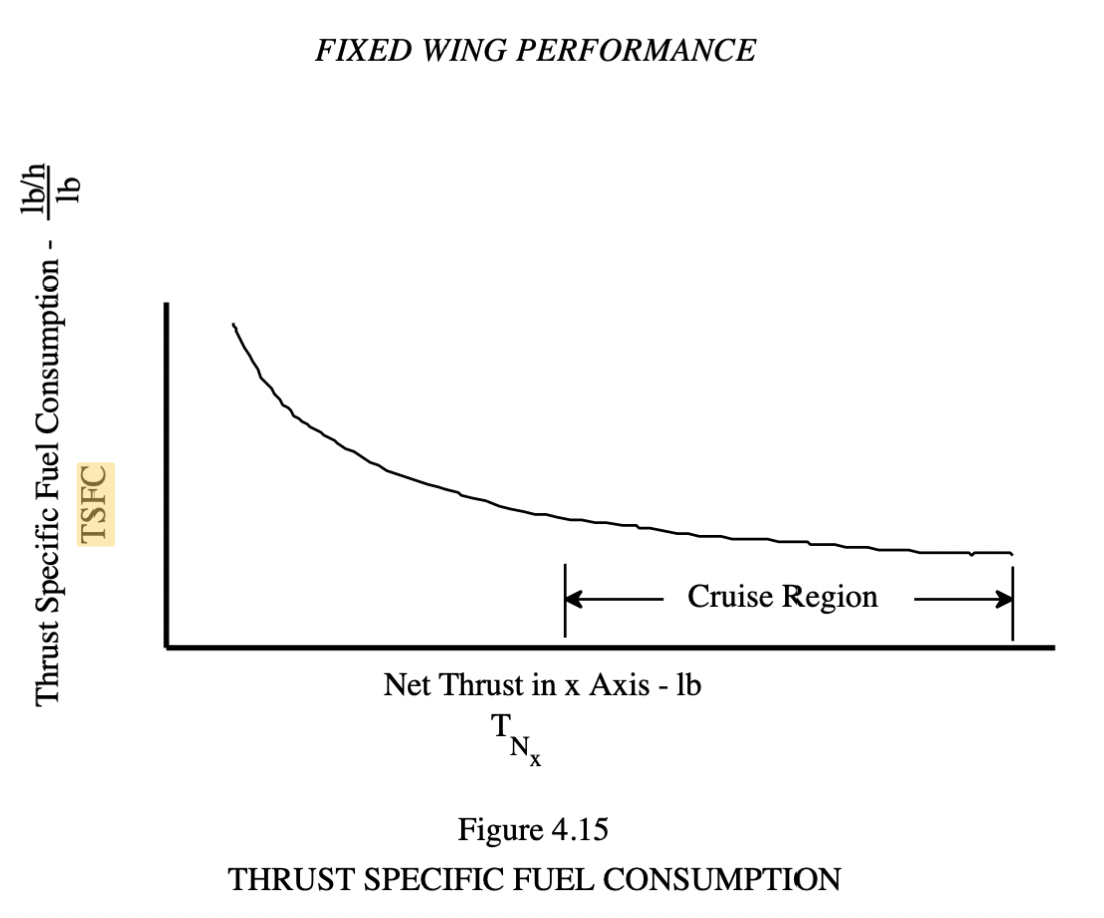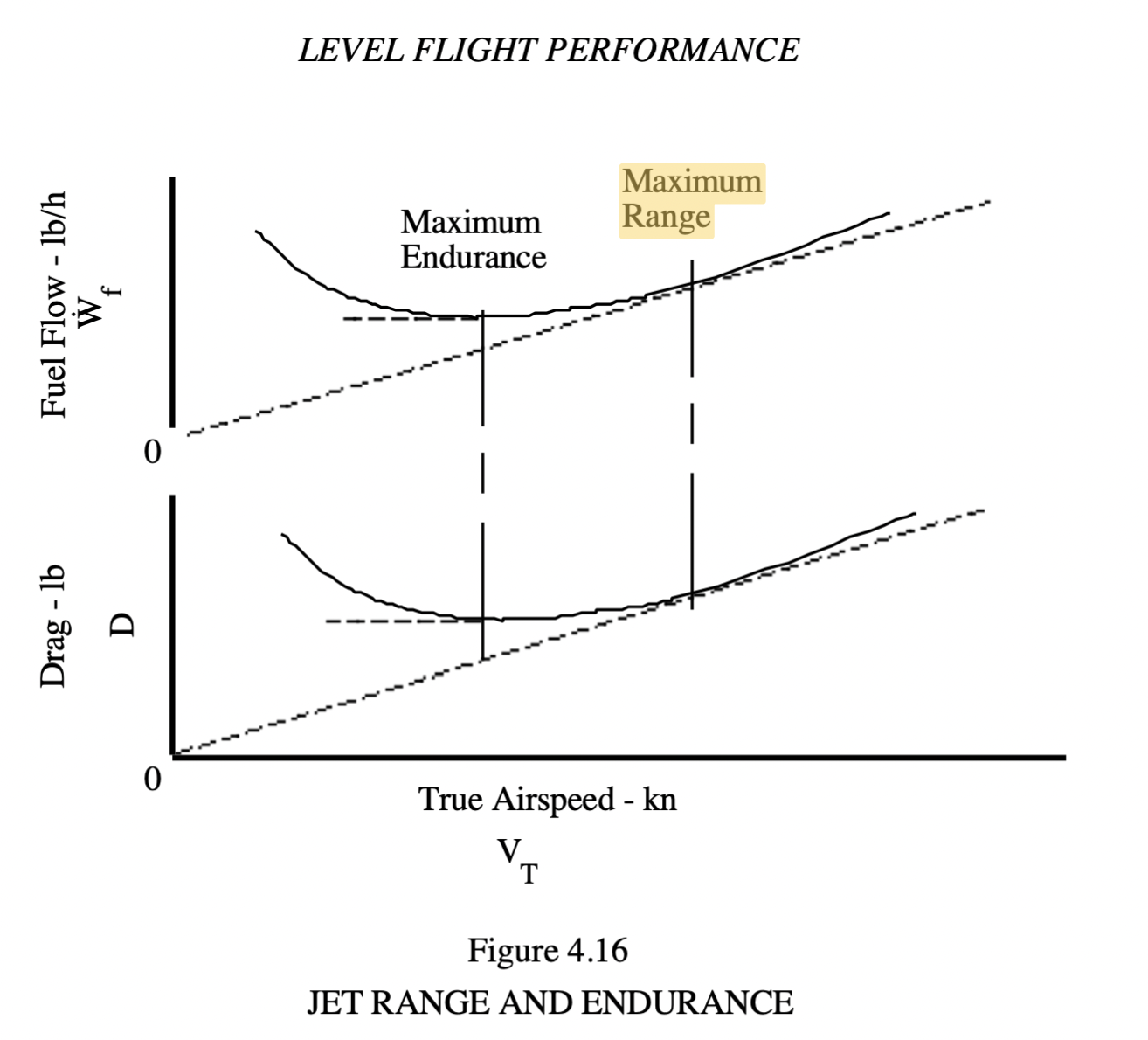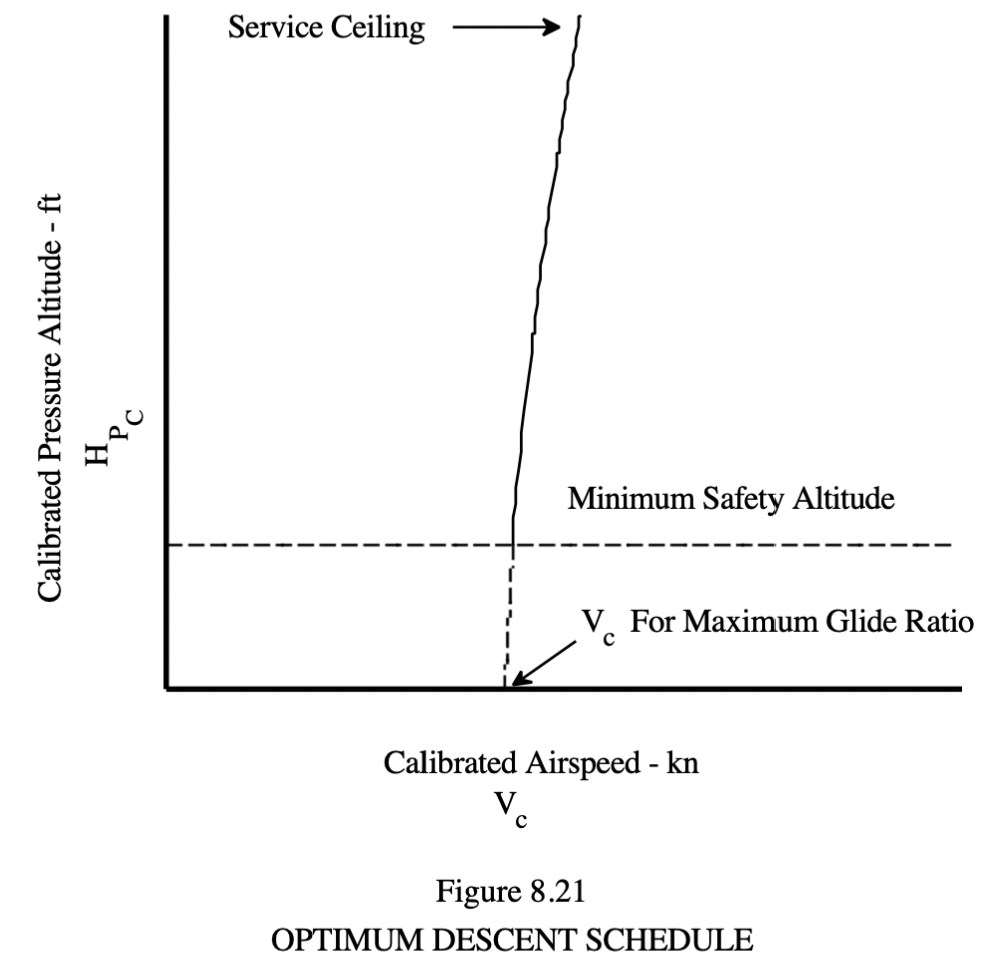Heavy Jet Descent Profile
Thread Starter
Heavy Jet Descent Profile
I was asked a question recently which I couldn’t answer so I thought I would ask here.
Big jet descent profile – for maximum range (least trip fuel).
For max range (minimum trip fuel), does a jet (any heavy jet really), reduce power to idle then descend at the best L/D speed (called best glide speed in bugsmashers). Would you maintain altitude until you achieved that best L/D speed then start descending, or start descending straight away given the cruise IAS at high alt would be fairly close to the best L/D – or is there a best L/D mach number above FL260. Is this the technique to get minimum trip fuel used assuming for the purposes of the question, no altitude or speed requirements and a straight in approach. Obviously, there is a reduction in speed as you get closer for flap/gear etc.
How does this compare with the typical descent profile in real world operations. Is it normally at a predetermined RoD of close to Mmo/Vmo like in the old days.
Big jet descent profile – for maximum range (least trip fuel).
For max range (minimum trip fuel), does a jet (any heavy jet really), reduce power to idle then descend at the best L/D speed (called best glide speed in bugsmashers). Would you maintain altitude until you achieved that best L/D speed then start descending, or start descending straight away given the cruise IAS at high alt would be fairly close to the best L/D – or is there a best L/D mach number above FL260. Is this the technique to get minimum trip fuel used assuming for the purposes of the question, no altitude or speed requirements and a straight in approach. Obviously, there is a reduction in speed as you get closer for flap/gear etc.
How does this compare with the typical descent profile in real world operations. Is it normally at a predetermined RoD of close to Mmo/Vmo like in the old days.
Join Date: Feb 2006
Location: Texas
Posts: 11
Likes: 0
Received 0 Likes
on
0 Posts
In theory, an idle descent from cruise altitude all the way to the ground would be most efficient. I believe it was actually common to at least attempt this feat in the early days of jet aircraft, because they burned more fuel even at idle and there wasn't nearly as much traffic to contend with. Obviously much less common in today's ATC environment, and with modern turbofan engines you don't want to be at idle on approach because of the spool up time in case of a go around or other issue.
Nowadays everything is managed by the FMC. I can only speak for my airline and the 737, but the dispatcher computes the flight plan based on current conditions and manages the inputs to achieve the desired outcome. That outcome can be best economy (lowest fuel burn), best time (shortest flight time) or anywhere in between. The software then outputs a Cost Index which is transmitted to the airplane with the takeoff data. The FMC uses that CI and the current conditions (weight, temperature, winds, etc) to determine climb/cruise/descent speeds.
The FMC in the 737 calculates an idle descent profile to comply with any airspeed/altitude restrictions in the flight plan. It will fly the speed (Mach to IAS) that was produced from the CI inputted. At least here in the USA almost every commercial airport is served by an RNAV arrival with multiple altitude/airspeed "gates" at fixes along the arrival. The FMC still plans for an idle path descent, which normally results in level offs after a fix until the next idle path is reached. When ATC issues a descent and you haven't reached the computed path it will descend at 1000fpm until intercepting the path or you reach the assigned altitude.
My airline famously flew every leg at the "barber pole" back in the days when gas was cheaper than water. That hasn't been the case for many years now and I assume it is also true universally in aviation. Fuel savings are a huge part of day to day operations both in the air and on the ground.
Nowadays everything is managed by the FMC. I can only speak for my airline and the 737, but the dispatcher computes the flight plan based on current conditions and manages the inputs to achieve the desired outcome. That outcome can be best economy (lowest fuel burn), best time (shortest flight time) or anywhere in between. The software then outputs a Cost Index which is transmitted to the airplane with the takeoff data. The FMC uses that CI and the current conditions (weight, temperature, winds, etc) to determine climb/cruise/descent speeds.
The FMC in the 737 calculates an idle descent profile to comply with any airspeed/altitude restrictions in the flight plan. It will fly the speed (Mach to IAS) that was produced from the CI inputted. At least here in the USA almost every commercial airport is served by an RNAV arrival with multiple altitude/airspeed "gates" at fixes along the arrival. The FMC still plans for an idle path descent, which normally results in level offs after a fix until the next idle path is reached. When ATC issues a descent and you haven't reached the computed path it will descend at 1000fpm until intercepting the path or you reach the assigned altitude.
My airline famously flew every leg at the "barber pole" back in the days when gas was cheaper than water. That hasn't been the case for many years now and I assume it is also true universally in aviation. Fuel savings are a huge part of day to day operations both in the air and on the ground.
Big jet descent profile – for maximum range (least trip fuel).
For max range (minimum trip fuel), does a jet (any heavy jet really), reduce power to idle then descend at the best L/D speed (called best glide speed in bugsmashers). Would you maintain altitude until you achieved that best L/D speed then start descending, or start descending straight away given the cruise IAS at high alt would be fairly close to the best L/D – or is there a best L/D mach number above FL260. Is this the technique to get minimum trip fuel used assuming for the purposes of the question, no altitude or speed requirements and a straight in approach. Obviously, there is a reduction in speed as you get closer for flap/gear etc.
For max range (minimum trip fuel), does a jet (any heavy jet really), reduce power to idle then descend at the best L/D speed (called best glide speed in bugsmashers). Would you maintain altitude until you achieved that best L/D speed then start descending, or start descending straight away given the cruise IAS at high alt would be fairly close to the best L/D – or is there a best L/D mach number above FL260. Is this the technique to get minimum trip fuel used assuming for the purposes of the question, no altitude or speed requirements and a straight in approach. Obviously, there is a reduction in speed as you get closer for flap/gear etc.
V
V
V
V
Cruise speed is a little more involved than L/Dmax for the jet aircraft due to the TSFC characteristics of the noise makers.
SAR or S.R. Specific (Air) Range is TAS/ff, or V.t/Wf. etc. where V = TAS
SGR Specific Ground Range is GS/ff, or V.t/Wf where V = GS (TAS+/- W/C)
What is always true is obvious, that max range (MRC) is biggest bang for the buck, where SAR (neglecting wind) or SGR is best.
Jets tend not to fly MRC in most cases, they will fly a speed that equates to min cost, which is slightly faster, and the canned value is a higher speed that will achieve 99% of MRC SAR. This usually equates to around a 4% increase (roughly) in TAS, reducing the cost of crew and aircraft variable maintenance costs etc per flight, and increasing potential utilization which can amortize capital costs and other fixed costs more effectively. Then you enter the hold and waste all of the effort and fuel-saving sweat 'n tears.
As the aircraft is generally around the CAS/Mno that gives efficient ranges, then at a TOD point, reducing thrust to minimum and entering the descent at the current speed is a close approximation of best efficiency for the descent phase. High-speed descents save time, and reduce the fuel used in the descent, but the overall effect is to increase total fuel burn due to the added level cruise time. Descents at endurance speed make sense when there is a time constraint requiring holding at the end, as the time in the descent at low thrust and low-speed results in an overall slight increase in fuel burn.
Excluding TSFC, optimum range speeds happen at a specific AOA, same for hold, V2, OEI drift downs etc. The FMC is doing the same work from the performance DB... but if it is not included, then if there is an AOA, like Citations, Lears, Falcons, Westwinds, A-4, F-4, preferably anything with an AOA indexer... In a cramped cockpit of those aircraft, having a go-to AOA index gives all the performance info that you need, discounting TSFC stuff, which is staring the operator in the face anyway.
Descents are done to the calculated path in general, but, a good approximation can be had by required V/S to airport, time to dest, (the ipad gives that on some programs...), X times height + Y, works as a logical check of whether the FMS has a major issue in it, if the distance is not based on the legs... (fix, DME etc...) the more fatigued you are the more value a cross-check is. Whatever works for you and avoids needless level flight at low altitude, or the practice TOGA is fair. The simpler the method, the higher the chance it gets used, and the less time spent head down doing maths instead of looking at the scenery/birds/traffic etc.
Boeing's Jet transport Performance Manual (D6-1420) Ch 35 Descent, Approach, and Landing has good worked examples of speed, weight and temperature effects for descents. Ch 32 Normal Cruise has a good discussion on what cruise charts are and how they are derived, and describes MRC and LRC in detail, while providing good examples of a specific aircraft. It is copyrighted, but you can probably get a copy.
USNTPS archive the FTM108 Fixed Wing Performance Manual, which is not copyrighted. It is a good read. The formulas that are presented are imperial units, and can be restated by other references, but are useable.







Most FMCs will in the absence of any wind profile being applied use the existing WC within a distance of TOD to calculate the TOD point, and will wash that out to zero at runway elevation where no surface wind has been entered. As the wind almost never does that, a linear reduction with altitude, (maybe in the tropics, or at McMurdo...) any variation with the computed component and actual will cause an error in the performance. What gets interesting is how the FMC handles dynamic changes. As often as not, any dynamic change when following a path will result in a speed change that will either increase thrust, or ask eventually for additional drag, or will depart the path and enter a speed mode at the limit speed. In many cases, the crew will obey the programmer's wishes, and later have to change the energy state by an equivalent amount... e.g., a substantial reduction in HWC while the path is being maintained is seen as a reduction in CAS/Mach, and will eventually call for "more Voltage Igor..." As the HWC is lower than planned, the optimum descent path is for an earlier descent and a lower height at the point that Dr Frankensence demands more juice. Recalculating the descent path, by any means, DIR TO, reinsert descent speed, swap descent modes momentarily, will start a recalculation and will invariably give an" ooops, my bad.." change to the vertical profile. Alternatively swapping out of path to FLCH or open descent (with care) cures the problem to, and the path with recover all by itself. Alternatively watch the system ask for drag, and then add thrust 5 minutes later, or V.V.
In the terminal area, all of the effort of the first 15 hours can be lost in minutes. Level flight that is obviously going to arise and could be minimised by reducing thrust is usually desirable, assuming the crew are awake. A year of finesse gets lost by one "whoops... TOGA, Flaps 20 (F15, Flap 3 etc) ... pos rate.... etc". Nothing wrong with doing go-arounds, they are just another play-around, but they do burn some gas, bar time, etc, and the SLF's wanna know that they are not about to meet their makers, apparently nowdays they are ready to send the last will and testament to their NOK as soon as the insipid coffee goes cold.
There are many variations on exactly how the plane is operated most effectively, but all relate to the effect of TSFC/ Cd, Cl. which gives Wf/TAS.... and therefore SAR or S.R. Some aircraft are simpler than others, like tiger moths and early Learjets, the tiger has a single speed more or less for stall/climb/cruise/descent/approach... much like a Lear 24, which is Vmo into Mmo, then Mmo into Vmo and land. You can guess what that says about the drag curve and the TSFC of CJ-610/J-85s. Still, gotta love stove pipe engines; if you wanna go up quick, they are pretty good.
Back in the day, Neil Armstrong dropped into the east coast and took a very short ride in a Lear 28 to FL510, and then a pretty quick ride back down to land, and almost made it back to the hangar before coasting to a stop. FAI record time to climb. The flight path was out over the water to the east to climb for the record, and then back west to the airport for the min fuel/min drag approach. (every lear 20 approach is min drag, with or without cans on the back... otherwise you never get invited back) The record could have been somewhat faster given the info above. If anyone has a Lear 28 still, it is out there to be improved upon, but then, a record with Neil's name on it seems to be worth some dignity & respect... Still, there is about 60 seconds to shave off a 12-minute time there.
Last edited by fdr; 6th Jul 2022 at 00:42.








